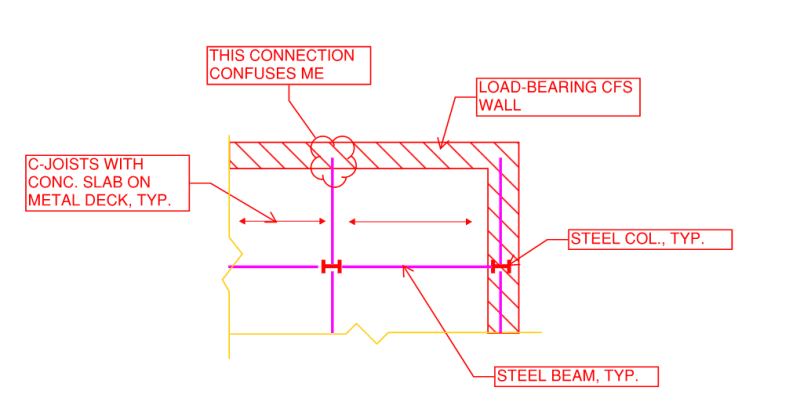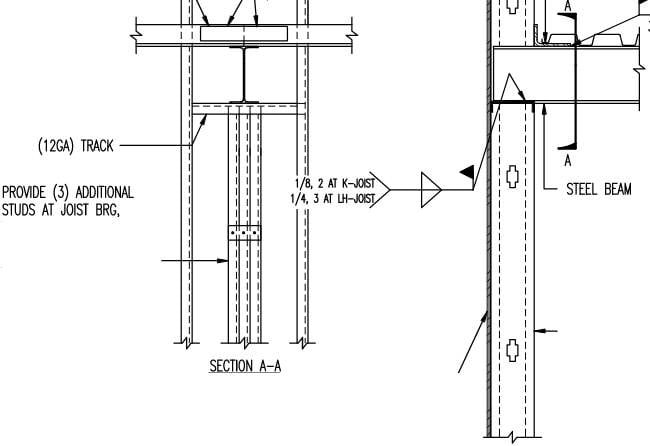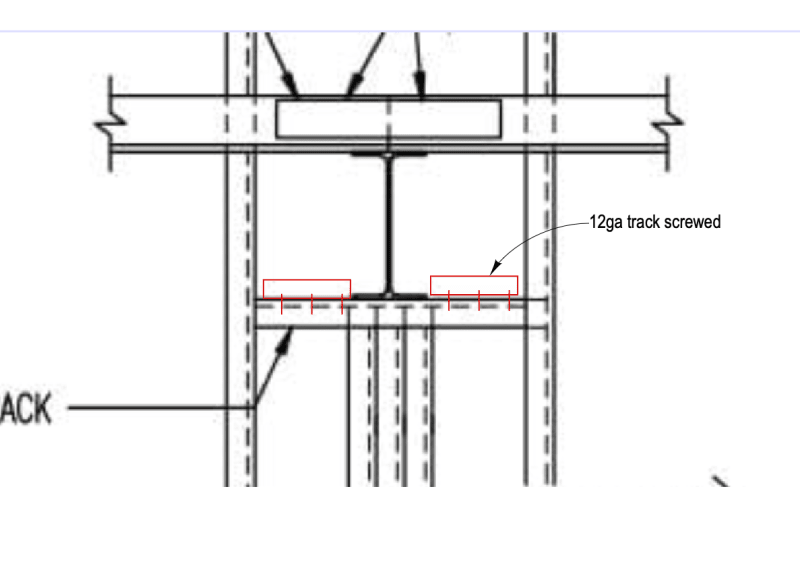Hi all,
Does anyone have connection details of the I-beam supported by the load-bearing CFS wall?
The end reaction is very minimal in this case. My initial thought is to have a built-up post using 3 or 4 studs, a top plate over the post and welded to the post, I beam on top of the top plate with 4 bolts.
The wall and beam are perpendicular to each other if that makes the difference.
Does anyone have connection details of the I-beam supported by the load-bearing CFS wall?
The end reaction is very minimal in this case. My initial thought is to have a built-up post using 3 or 4 studs, a top plate over the post and welded to the post, I beam on top of the top plate with 4 bolts.
The wall and beam are perpendicular to each other if that makes the difference.



